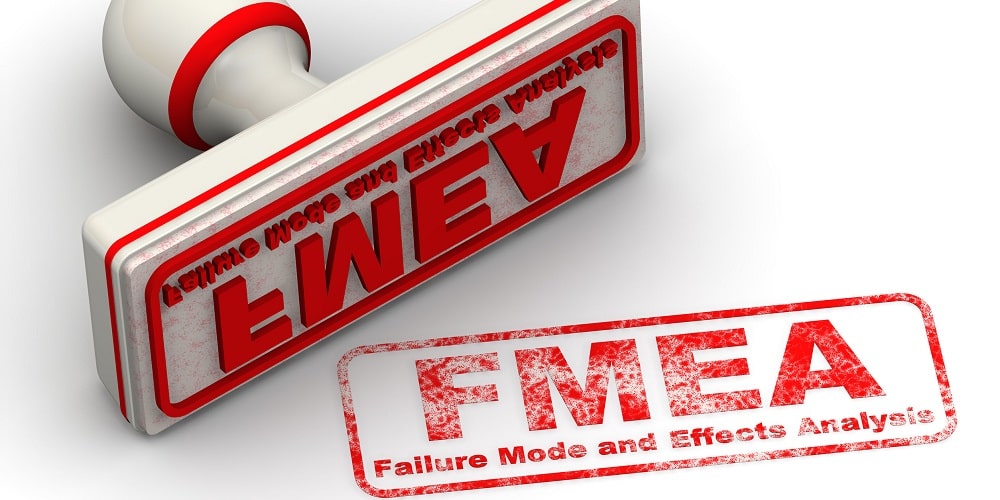
In the ever-evolving landscape of industries, ensuring product quality, reliability, and safety remains paramount.
Failure Mode and Effects Analysis (FMEA) is a systematic methodology used by organisations across various sectors to identify potential failure modes within a system, product, or process, and to mitigate associated risks. However, to fully leverage the power of FMEA, organisations often invest in comprehensive training programs for their teams.
At People & Process we deliver on-demand on line FMEA training as well as tutor-led programmes.
In this blog, we delve into the benefits and applications of FMEA training, shedding light on its indispensable role in enhancing operational efficiency and fostering innovation.
Understanding FMEA:
Before delving into the benefits of FMEA training, it’s essential to grasp the fundamentals of this methodology. FMEA involves a structured approach to identifying, prioritizing, and mitigating potential failure modes within a system, product, or process. By systematically analysing failure modes and their effects, organisations can proactively address vulnerabilities, thereby minimizing the likelihood of costly errors, defects, or safety hazards.
Benefits of FMEA Training:
- Risk Identification and Mitigation: FMEA training equips participants with the knowledge and skills needed to systematically identify potential failure modes and assess their associated risks. By understanding various risk assessment techniques and mitigation strategies, teams can effectively prioritize areas for improvement and develop proactive solutions to mitigate potential failures.
- Enhanced Problem-Solving Skills: FMEA training fosters a culture of continuous improvement by empowering individuals with robust problem-solving skills. Participants learn how to analyse complex systems, identify root causes of failures, and develop innovative solutions to prevent recurrence. These enhanced problem-solving capabilities not only improve product quality but also drive operational efficiency and customer satisfaction.
- Cross-Functional Collaboration: Effective FMEA implementation often requires collaboration across multiple departments and disciplines. FMEA training brings together individuals from diverse backgrounds, such as engineering, quality assurance, and operations, fostering cross-functional collaboration and knowledge sharing. By leveraging the collective expertise of team members, organisations can gain valuable insights and develop comprehensive risk mitigation strategies.
- Compliance and Regulatory Requirements: In regulated industries such as healthcare, automotive, and aerospace, compliance with stringent quality and safety standards is non-negotiable. FMEA training helps organizations navigate complex regulatory requirements by providing guidance on industry best practices, standards, and guidelines. By ensuring compliance with regulatory mandates, organizations can mitigate legal risks and safeguard their reputation.
- Cost Savings and Waste Reduction: By proactively identifying and addressing potential failure modes, FMEA training enables organizations to minimize costly errors, defects, and rework. By reducing waste and optimizing processes, organizations can achieve significant cost savings while enhancing overall operational efficiency and profitability.
- Continuous Improvement Culture: FMEA training instills a culture of continuous improvement within organisations, where employees are encouraged to proactively identify areas for enhancement and implement innovative solutions. By fostering a mindset of learning and adaptation, organisations can stay ahead of the curve, drive innovation, and remain competitive in today’s dynamic marketplace.
Applications of FMEA Training:
- Product Development: FMEA training is instrumental in product development processes, where it helps teams identify and mitigate potential failure modes early in the design phase. By addressing design flaws and reliability issues upfront, organisations can accelerate time-to-market and deliver products that meet or exceed customer expectations.
- Manufacturing Processes: In manufacturing environments, FMEA training is applied to optimize production processes, improve product quality, and minimize defects. By systematically analyzing manufacturing processes and equipment, organisations can identify opportunities for process improvement and implement preventive maintenance measures to prevent breakdowns and downtime.
- Supply Chain Management: FMEA training is also valuable in supply chain management, where it helps organisations identify and mitigate risks associated with suppliers, materials, and logistics. By assessing the potential impact of supply chain disruptions and implementing contingency plans, organisations can enhance supply chain resilience and ensure uninterrupted operations.
- Service Industry: In the service industry, FMEA training can be applied to identify potential failure modes in service delivery processes, such as customer support, logistics, and IT systems. By proactively addressing service-related risks, organisations can improve service quality, minimize service disruptions, and enhance customer satisfaction.
Conclusion:
In conclusion, FMEA training offers a myriad of benefits and applications for organisations seeking to enhance product quality, reliability, and safety. By equipping teams with the knowledge and skills needed to systematically identify and mitigate potential failure modes, organisations can drive operational excellence, foster innovation, and gain a competitive edge in today’s dynamic business environment.
As industries continue to evolve, the importance of FMEA training in building resilient and sustainable organizations cannot be over
